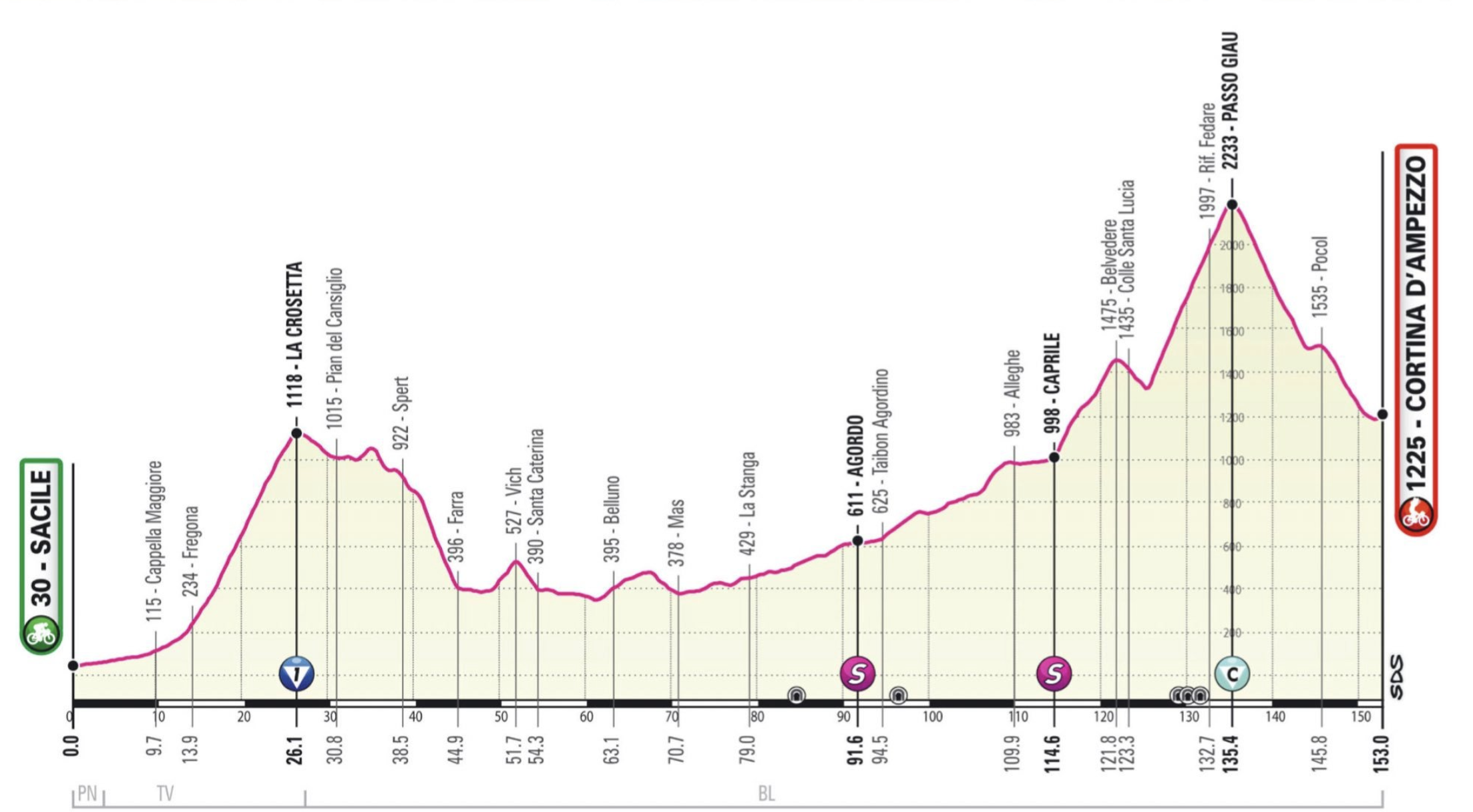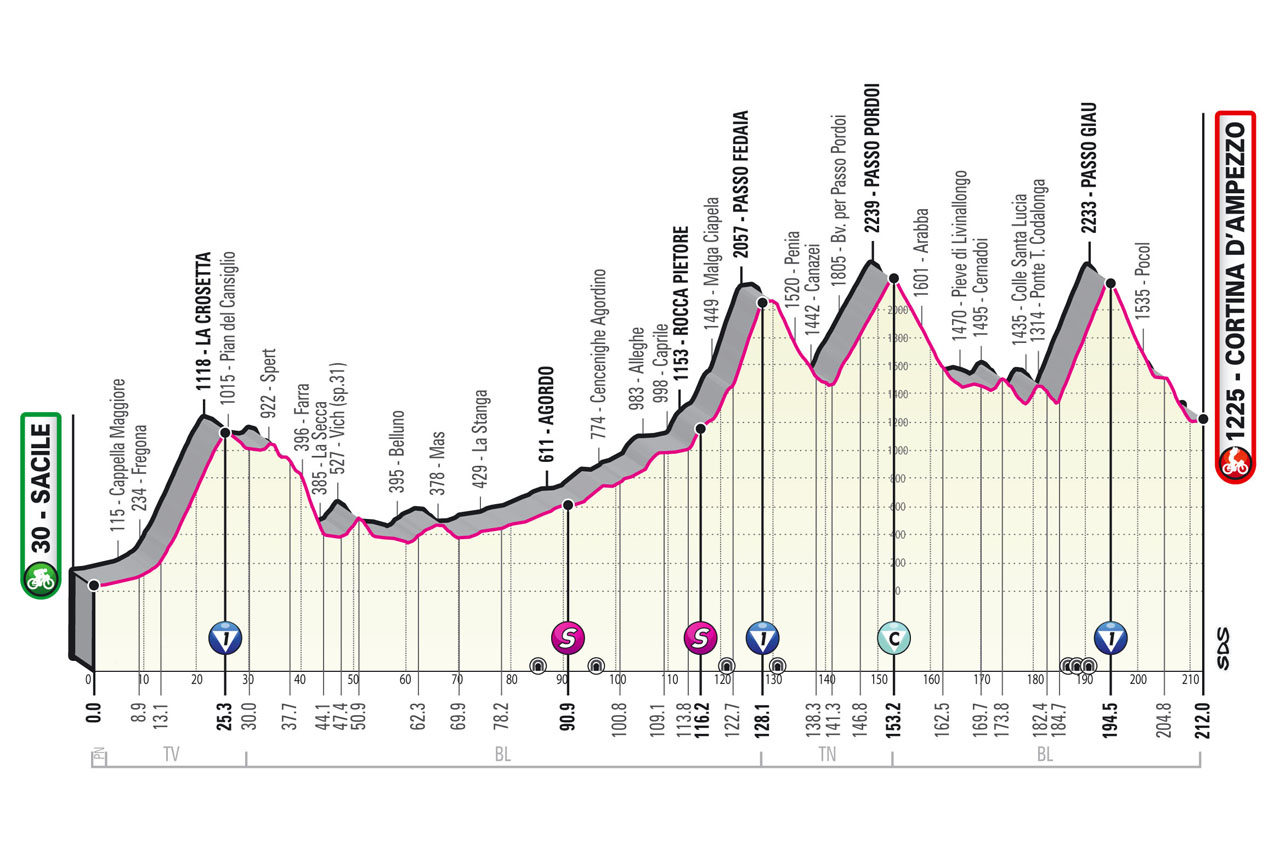Giro d'Italia queen stage cut back due to weather and safety concerns
Fedaia and Pordoi passes removed as Monday's Dolomite outing is reduced from 212km to 153km

Stage 16 of the Giro d'Italia, which had been billed as the 'queen stage' of the race, has been stripped back just before it was due to start, amid concerns over weather conditions in the Dolomites.
Race organisers held discussions with riders at the start in Sacile on Monday morning, and the decision was taken to remove two major mountain passes, cutting the total distance from 212km to 153km.
The stage will still start in Sacile and finish in Cortina d'Ampezzo, but will skip the Passo Fedaia and the Passo Pordoi, two first-category high-altitude climbs in the Dolomites, where rain and snow is forecast for Monday afternoon.
The stage will still finish with the first-category ascent of the Passo Giau, followed by the 17km descent to the finish.
As it stood on Monday morning, the Fedaia and Pordoi were passable, with the roads themselves clear of snow. However, the main concern reportedly revolved around the descents, with fears of icy roads and worsening precipitation in the afternoon.
The UCI’s Extreme Weather Protocol dictates that discussions are to be held between riders and race organisers when extreme conditions are in force or forecast.
"I think it’s the best decision," said Christian Salvato, the former racer who is acting as the rider representative for the riders’ union, the CPA.
Get The Leadout Newsletter
The latest race content, interviews, features, reviews and expert buying guides, direct to your inbox!
"The riders want to race the stage and put on a show but the stage goes over 2000m three times. We hoped for an improvement and tried to do the whole stage but looking at the forecasts for the high mountains they could get worse.
"We didn’t want to expose the riders to risks in the high mountains and I want to thank RCS Sport for taking the best decision. The Passo Giau is still set to be raced in the hope the weather improves during the day. The riders will race hard and put on a show."
Race director Mauro Vegni added: "Our first objective is to ensure the riders reach Milan safely. The weather conditions could be good but we don't know how the forecast will go. We decided it was more important to do a shorter intense stage rather than face a complex situation, that’s why we’ve cut the two long descents.
"We can’t cancel all the stage, there’s always some risks involved in racing.
"Now they’ll only risk during the last 10 kilometres, on the descent of the Passo Giau to Cortina, we’ve cut out the other long descents and we think we’ve protected the riders and the stage. We’re all given up something and the riders have agreed to race the reduced stage.

"The one condition we had during the talks and when accepting the changes was that the stage finished in Cortina. The option of taking the times at the summit of the Passo Giau doesnt work – the stage will go to the finish in Cortina."
The change in route significantly alters the complexion of one of the most highly-anticipated stages of this year’s Giro.
Not only did it contain four first-category climbs, totalling nearly 6000 metres of elevation gain, but it was also the second longest stage of the entire Giro. Now, the stage, which closes the second week, will be less demanding and likely less attritional.
With the start delayed by half an hour due to the shortening, the route still heads out from Sacile and quickly tackles the Crosetta climb 11.6km long at 7.1 per cent, followed by a drop back down into the valley.
The long false flat section is retained, with the first intermediate sprint still in Agordo after 91km and the second brought forward slightly to Capile after 114km. However, instead of turning west to take on the Fedaia – 14km at 7.6 per cent – and the Pordio – 11.8km at 6.8 per cent – the route heads straight onto the Passo Giau, which measures 9.9km at 9.3 per cent. With the removal of the Pordoi, which rises to 2239 metres, the Giau is now the ‘Cima Coppi’ – the highest point of this year’s Giro at 2233m.
The top of the climb is followed by a 17km descent and a brief kick up to the line in Cortina d’Ampezzo. Some 2000 metres have been lost from the total elevation gain of the stage.

Cyclingnews is the world's leader in English-language coverage of professional cycling. Started in 1995 by University of Newcastle professor Bill Mitchell, the site was one of the first to provide breaking news and results over the internet in English. The site was purchased by Knapp Communications in 1999, and owner Gerard Knapp built it into the definitive voice of pro cycling. Since then, major publishing house Future PLC has owned the site and expanded it to include top features, news, results, photos and tech reporting. The site continues to be the most comprehensive and authoritative English voice in professional cycling.